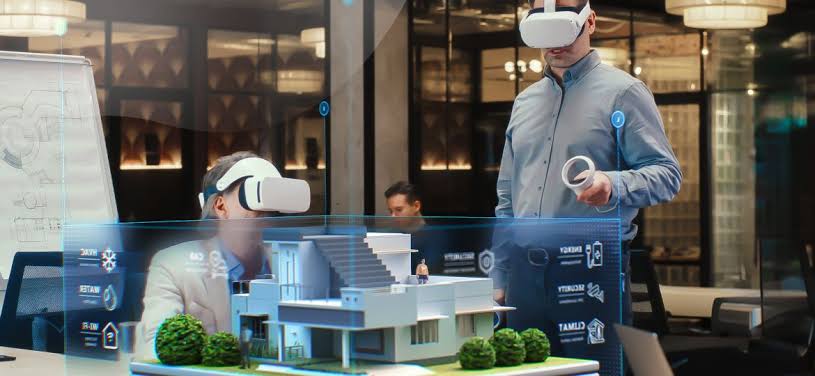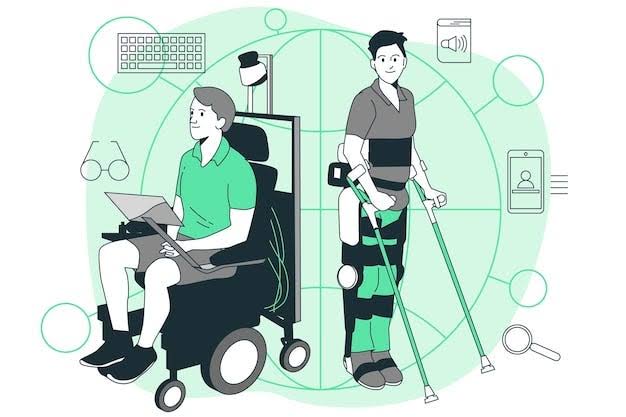The real estate industry has always relied on innovative methods to attract buyers and investors. From glossy brochures to high-definition photography and now drone footage, technology has continuously shaped the way properties are marketed. Virtual reality (VR) is the next frontier, and it is already transforming how buyers interact with real estate listings. As technology advances, the future of VR in real estate marketing is becoming even more promising, offering immersive experiences that go beyond traditional visuals.
Immersive Property Tours
One of the biggest advantages VR brings to real estate marketing is the ability to conduct immersive property tours. Instead of relying on static images or videos, VR allows potential buyers to step into a property virtually, exploring it as though they were physically present.
This innovation saves both time and money for agents and clients. International buyers, for example, can view multiple properties without traveling across the world. Busy professionals can evaluate homes on their schedule, narrowing their choices before making in-person visits. This efficiency benefits both real estate agents and clients alike.
Personalization of Property Experiences
The future of VR in real estate marketing lies not just in virtual tours, but in personalization. Buyers will increasingly be able to customize their virtual experiences by modifying property features during the tour. For instance, they might change wall colors, swap flooring materials, or even rearrange furniture layouts.
This interactivity enables clients to envision how a space could look based on their preferences. It helps them emotionally connect with the property and boosts the chances of a purchase. Personalization through VR could become a powerful tool in closing deals faster.
Integration with Augmented Reality
As VR evolves, it is likely to merge with augmented reality (AR) to create even richer experiences. Buyers might wear AR glasses to visualize how their furniture fits into a property during an in-person visit or use VR headsets to compare multiple design variations instantly.
For commercial real estate, AR and VR integration will allow businesses to explore how office layouts, retail store designs, or hospitality spaces will function before committing. This dual approach enhances decision-making by reducing guesswork and giving buyers more control over the visualization process.
Expanding Global Reach
VR technology eliminates geographical barriers in real estate. International investors can explore properties virtually without being physically present in the country. This expands the buyer pool for real estate agents and developers, making it easier to market high-value properties to global clients.
In the future, VR platforms could host virtual property expos where developers showcase multiple properties in one interactive event. Clients could tour apartments, villas, or commercial buildings across different regions from the comfort of their homes, making global real estate marketing more dynamic and efficient.
Improved Marketing Content
Real estate marketing heavily depends on visual appeal. With VR, agents can create more engaging content that goes beyond photographs and videos. A 3D immersive experience captures buyers’ attention and keeps them engaged for longer periods.
Developers can also use VR to showcase properties that are still under construction. Virtual walkthroughs of unfinished homes or commercial spaces give buyers confidence in their investments and help generate pre-sales, which is crucial for project funding and success.
Cost-Effective Long-Term Investment
While adopting VR technology may seem expensive initially, it is likely to become more cost-effective in the future. As VR headsets and software become more affordable and accessible, real estate firms of all sizes will adopt them.
The long-term benefits outweigh the costs, as VR reduces the need for constant property showings, minimizes travel expenses, and increases the likelihood of faster sales. For real estate agents, VR can become a standard marketing tool that enhances efficiency and profitability.
Enhancing Emotional Connections
Buying a property is not just a financial decision but also an emotional one. VR has the unique ability to create emotional connections by allowing buyers to immerse themselves in the property environment. Walking through a cozy living room or stepping out onto a balcony with a virtual city view can trigger emotional responses that photographs alone cannot achieve.
As VR becomes more advanced with realistic visuals, spatial sound, and even sensory feedback, these emotional experiences will feel more authentic, making buyers more inclined to invest.
Data-Driven Insights
In the future, VR platforms in real estate will likely integrate with data analytics tools. Agents and developers will be able to track how long buyers spend in different rooms, which features they interact with most, and what design preferences they choose.
This data can provide valuable insights into buyer behavior, enabling agents to tailor their marketing strategies more effectively. It also helps developers design properties that align with consumer demand, ensuring higher satisfaction and better returns on investment.
Conclusion
The future of virtual reality in real estate marketing is bright and full of possibilities. From immersive property tours and personalized experiences to global reach and data-driven insights, VR is revolutionizing how properties are showcased and sold. As the technology becomes more affordable and widely adopted, VR will likely become a standard tool for real estate professionals worldwide.
For buyers, it means convenience, personalization, and greater confidence in decision-making. For agents and developers, it translates into broader reach, cost savings, and stronger emotional engagement with clients. Virtual reality is not just reshaping the present of real estate marketing—it is defining its future.




And it pains me that it’ll only be accessible in developed parts of the world